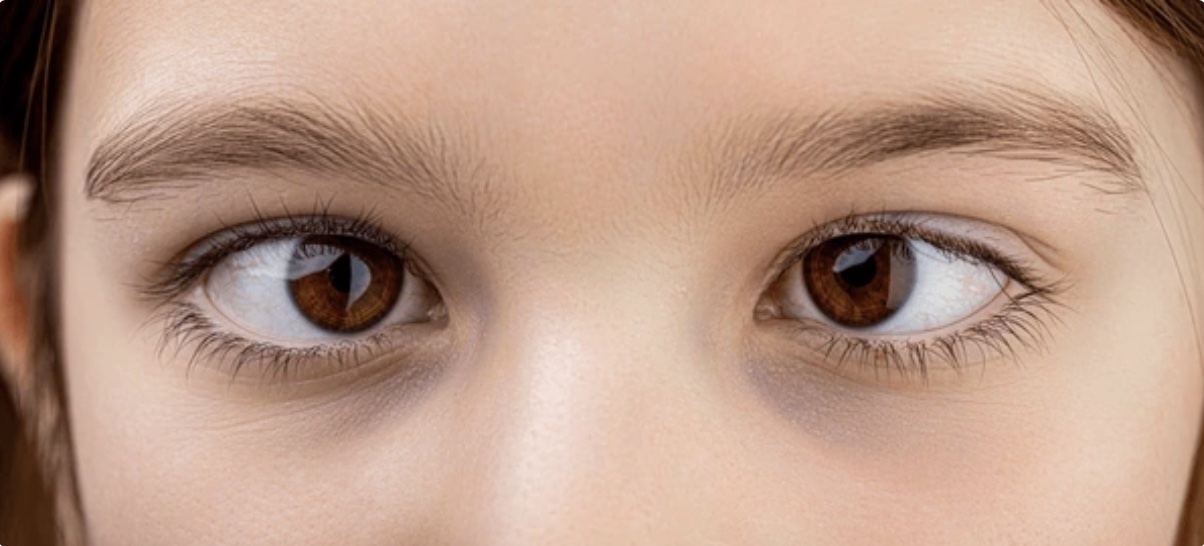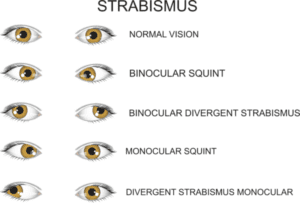Bizi Ara +90 324 238 83 83
Home »
Last updated on August 27th, 2024 at 12:33 am
Home »

Strabismus, or Crossed Eye or Squint, as it is known, occurs with involuntary shifting of the eye. Especially Strabismus is a condition where the eyes are in the wrong position
and look towards different points. While one of the eyes is looking straight ahead, the other is looking outward, inward, or down. Wrong position may be obvious all the time, or it may appear in some directions. Also, extra ocular muscle Squint Eye Surgery is performing to correct strabismus. Particularly, in strabismus, there is a shift of any of the eyes in the horizontal, vertical, or Torsion direction and can affect children or adults.
Generally, the Squint can be categorize as congenital, acquired, restrictive, or paralytic. Especially, the aim of the Squint Eye Surgery is to return the eyes to their normal anatomical position and maximize the potential for equal vision (binocularity) with both eyes. Among other indications, it is aimed to eliminate the vision of a single object as two adjacent images horizontally, vertically or obliquely, to relieve mechanical restriction or to restore the normal head position.
Also, in cases of nystagmus, it is possible to improve vision by surgical intervention. During Squint Eye Surgery, muscles locates outside the eyeball can be operate either individually or more than once. Procedures are performing on both eyes are common. In some cases, adjustable suture surgery can be perform. Generally, Crossed Eye Surgery is performing under general anesthesia while the patient is asleep. However, in some cases, local anesthesia can be possible. Therefore, local anesthesia can be use for standard “muscle wasting” procedures in surgical patients who are good candidates for conscious sedation.

There are several forms of strabismus. The two most common are:
Usually this occurs in cases of uncorrected farsightedness and a genetic predisposition (family history) of eyes turning inward. Since the ability to focus depends on where the eyes are looking, it takes the extra focusing effort required to keep distant objects at bay. Especially, sharp focus can cause eyes to turn inward. Also symptoms includes double vision, closing one eye when looking at something nearby, and tilting or turning the head. Particularly, this type of strabismus typically begins in the first few years of life. Generally, this condition is usually treated with glasses. Additionally, this may require eye patches and/or Squint Eye Surgery on the muscles of one or both eyes.
Especially, in this type of strabismus, one eye is fix (concentrating) on a target, while the other eye looks out. Also, symptoms includes double vision, headache, difficulty reading, eyestrain, and closing one eye when looking at distant objects or in bright light. Particularly, while the ocular deviation may be notice by others, patients may have no symptoms. Intermittent exotropia can happen at any age. Additionally, treatment may includes glasses, patches, eye exercises and/or Squint Eye Surgery on the muscles of one or both eyes.
Another type of strabismus is infantile esotropia. This condition appears by a large amount of inward turning of both eyes in infants. Generally, this is typically beginning before six months of age. Usually there is no significant amount of farsightedness and the glasses do not correct the transition. Accordingly, introversion may begin sporadically, but soon becomes inherently stable. Also, it can be understandable when the child looks far and near. Therefore, the treatment for this type of strabismus is surgery of the muscles of one or both eyes to correct the alignment.
Also, adults can experience strabismus. Most commonly, ocular misalignment in adults is cause by stroke. Generally, it can be cause by physical trauma or a previously untreated or relapsed or advanced childhood strabismus. Strabismus in adults can be treat in a variety of ways, including observation, patching, prism glasses, and/or strabismus surgery.
Most strabismus is cause by an abnormality of the control of the muscle nerves of eye movement. Although we do not have full knowledge of the information about the center that controls these muscles in the brain. Although, new data are obtain as a result of research. Less commonly, there is a problem with the actual eye muscle. Generally, strabismus is often inherit, and about 30 percent of children with strabismus have a family member with a similar problem.
Anyone over the age of four months who appears to have strabismus should undergo a full eye exam by a pediatric ophthalmologist. With extra time spent examining how the eyes focus and move.
Treatment options include:
Generally, Crossed Eye Surgery is apply under general anesthesia with dissolving stitches. Sometimes adults need adjustable strabismus surgery. Which eye muscle positions must be adjust after surgery.
Unfortunately, it is popularly believe that children will overcome Squint or heal on their own. In reality, this is not true and if strabismus is not treat in childhood. Therefore, the patient may worsen in the future.
If the Crossed Eye Surgery is not eliminate and the eyes are not align properly, the following complications may occur:
In order to understand whether the patient is responding to the treatments and to make additional adjustments after the treatment. Especially, if necessary patient will definitely need to go to the eye surgeon regularly.
In children with strabismus, if the condition is caught early and treat appropriately, it can result in excellent vision and depth perception and protect against vision loss.
Especially, if you or your child have a strabismus problem, you can contact us immediately and make an appointment with our Oculoplastic Eye Surgeon who specializes in strabismus Crossed Eye Surgery.
Diabetic Retinopathy Disease. Macular Degeneration Treatments. Glaucoma Disease and Treatments. Retinitis Pigmentosa Disease and Treatments. Dry Eye Syndrome Treatments. Periodic Eye Examinations.
Bizi Ara +90 324 238 83 83